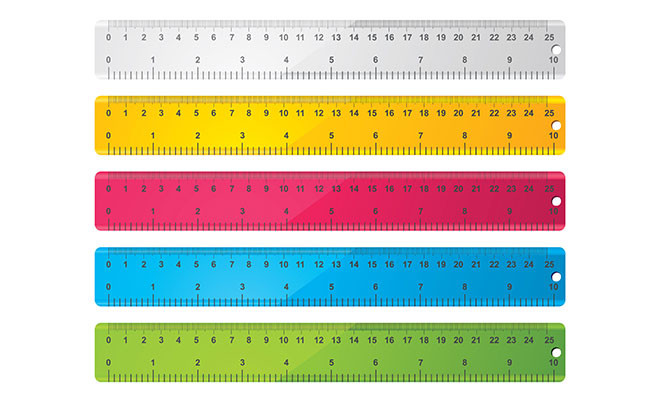
Benchmarking Success
“Now of course we ought to keep on seeking for objective correlations or indicators of subjective states. On the day when we discover such a public or external indicator of pleasure or of anxiety or of desire, psychology will have jumped “ Abraham Maslow, Toward a Psychology of Being
In the field of Coaching, the Meta-Coach Training system introduced the practice of benchmarking as both a Model and a process. Over the years, others had introduced this idea, this was not new to us. Many others have called for some way to measure competency. Many authors and coaches had also bewailed the fact that there was no training system that had established a way to measure and standardise skill competency. It was this need for measuring and standardising a skill in the “soft” sciences, that challenged us to come up with the Benchmarking Model of Meta-Coaching.
In Meta-Coaching we were the first to succeed in establishing a quantifying process for measuring the intangible skills of coaching competency. Doing this in the “hard” sciences is relatively easy. When it comes to tangible things, it is fairly easy to break down the component parts, pieces and steps, and replicate a best practice. In business modeling, the idea of best practices has revolutionised the ability to build quality in and accelerate the learning curve, enabling people to keep up with the speed of change.
» But how can we benchmark intangible things?
» How can we set a scale on soft skills?
» How can we model best competencies, identify the component parts, the critical success factors, and replicate it to accelerate our learning?
» Is it actually possible to quantify the quality of an experience?
» How can we model best competencies, identify the component parts, the critical success factors, and replicate it to accelerate our learning?
» What processes can we use to set benchmarks on the skills of coaching, so that we can
identify best practices in coaching and create training that replicates that expertise?
Benchmarking: A Hard Approach to Soft Skills
In Neuro-Semantics we have answered these questions by creating an implementation model involving the benchmarking of concepts.
What is benchmarking?
The term benchmarking was coined in the early days of carpentry and cabinet making. Originally the term referred to the bench that carpenters used to mark out lengths and dimensions, against which they could then measure other pieces of timber. Different marks were made on the bench to represent different size criteria for parts of their cabinets. This enabled them to work to a standard that would establish consistency in the final products.
» What is benchmarking in coaching?
» What bench can set, establish and then set marks on, with regard to the skills of a competent
coach in listening, questioning, being present, giving feedback, facilitating, etc.?
» What standards guide and govern the process of coaching?
» What criteria does a highly competent coach use?
» What benchmarks can we look for in a skillful coaching session?
» How would a coach help establish benchmarks for a competency that a business would like
to replicate in its people?
» How do we know when a person is skillful in a competency?
Benchmarking, as a meta-cognitive skill, involves stepping back from a skill or competency, modeling the critical success components, setting sensory-based or empirical standards, and creating a scale for levels of that competency. In this, benchmarking not only measures and sets criteria for excellence, it also provides a way for us to take intangible ideas, beliefs, feelings, intentions and other internal states and translate them into the empirical world as practical actions. Benchmarking, as a process, enables us to operationalise our terms, turn abstract nouns into verbs, and identify the see-hear-feel (sensory-based) variables that allow us to measure a skill, and against which to give feedback.
In Neuro-Semantics we spend a lot of time on translating great ideas, principles, and concepts into the real world. This fits the systemic nature of the Meta-States Model, which describes how our reflexive consciousness both moves up into the highest reaches of the mind and also moves back down through neurology to become incorporated in muscle-memory and habitual behaviour. This completes the circuit. It connects the feedback loops of bringing information in and feeding back information about our information to move up. Then we bring that information back down to feel it in our body, to activate our motor cortex and to integrate the new learning’s into our muscle memory so that we use the action tendency of our mind-body-emotion system.
The Mind-to-Muscle pattern is the classic example in Neuro-Semantics. We begin with a great idea —some concept or principle that we know is valid and that we would like to commission our body to fulfill and act out. Take something like “Wealth is created by spending less than you make.”
“Fitness comes from exercising regularly”. We know these are valid principles, but do we do them? Do they actually guide and govern our everyday actions? If not, then we know more than we do. As such, we have a knowing-doing gap.
To close that gap, the Mind-to-Muscle pattern uses the power of language and state, accessing to train or coach the body how to feel the great idea and how to get the principle into muscle memory. The pattern takes a person through a series of steps, to bring down the abstract idea so that it finds more concrete ways to express itself.
In a similar way, this is what we can do using benchmarking. We can take a great standard like active listening, supportive presence, giving unconditional positive regard, high quality feedback, etc. and we can operationalise these vague abstract terms, in order to create a scale of actions and behaviours indicating different levels of competency. Now the nice thing about a scale of specific actions is that we can measure how far we have come, and know precisely what actions to incorporate in order to take our skill to the next level of excellence.
Benchmarking comes in when we have some great theoretical understandings, principle, or model that we want to actualise into practical and learnable skills. When we are ready to do that, we then need a way to measure the competency skills. Claiming the validity of a great idea or the practicality of a great model is one thing; having that ability to make it happen in real life is another.
The Benchmarking Model – given our definitions of benchmarking – we set a mark on a conceptual bench of some abstract idea or experience, by working with the component behavioural pieces of that idea. Once we have broken down the skill into its components, we can set a developmental scale that indicates different degrees of the skill from no competency, little competency, some, more than some, much, lots. If a skill is a process, then we can distinguish the different developmental stages. And that means we can identify the behaviours at each stage and plot a developmental pathway. By specifying the behaviours we can format skill development from incompetent to competent and finally to mastery.
Scaling the Levels of Competence in a Skill
5 Mastery: level of expertise in the skill.
4 Elegant: smooth, seamless.
3 Competence: Skill present and working.
2 Awkward and clumsy stage: low level skill.
1 First signs of the skill emerging in fragmented ways.
0 Incompetence: no presence of the skill.
In this scaling, we establish a sequence of marks at regular intervals, which we use as a reference for making measurements. This allows us to rank attributes or characteristics. Every scale will have thresholds or boundaries at each end. We have actually been doing this for years in Meta-States training in a general way with questions:
» From 0 to 10, how much are you in that state right now?
» How much more would you want to experience?
» What do you have to do to increase that state?
In doing this, our measurements become actionable, linked to the highest levels of a critical skill, and made as objective as possible. Actionable means that we can act on the measurement, we can do something about the scaled information. The measure informs us about two factors: first, where we are and second, what we can do to move to the next level. Objective is a relative term that calls upon us to make the measurements based on as few subjective feelings and opinions as possible.
We do that by identifying sensory-based or behavioural indicators that give evidence of the experience. When we have a set of behaviours, then we have the behavioral equivalences— behaviours that are equivalent to the abstract idea.
When we use benchmarking to identify the behavioural equivalence of a state or experience that we want to improve, we are essentially asking:
» How would I know you are accomplishing X?
» What would I see or hear that would indicate such?
» What are the critical factors for success with X?
» What behaviours are critical in this experience?
In measuring we make comparisons. We contrast and compare one thing with another. In benchmarking we take a skill, break it down into key behavioural components we can actually see, hear, and feel. After we identify a development scale from simple, to more complex, to expert level, we give numerical values to the critical components to distinguish the degree of skill development,
as a skill moves from low to high competence. This sequence of numbers from low to high, then enables us to see where a person is on the developmental scale. By themselves, these raw numbers have no value. To be meaningful and significant, we attach the numbers to a baseline or scale. Doing this enables us to then compare them against each other. By measuring, we can know where we are, where we want to go, and identify the pathway for greater quality and improvement.
Benchmarking and Measurement
Benchmarking allows us to more accurately measure what we are doing and how we do what we do. The process enables us to introduce measurements when dealing with things that are mostly intangible. We do that by creating a scale of the specific behaviours that make up a competency.
The problem with the development of most competencies, from customer service to leadership, is quantifying what the highly skilled experts actually do that makes the difference.
» How do we measure or “mark” the degree and quality of caring and attending to the needs
of a customer?
» How do we mark and measure the way a leader engages our imagination with a new vision?
» How do we measure a manager’s skill in enlisting or creating buy in?
These intangible activities and experiences are not easy to describe, let alone scale or “manage.”
We cannot easily mark and measure them as we do with the tangible processes that we replicate on an assembly line.
Yet this is precisely where we most need the precision that benchmarking facilitates. If we can set up some kind of way of marking the critical elements of an activity, and then set up a measure for it, especially as it becomes more and more developed, we can then manage ourselves and others in replicating the quality of that best performance. This is the vision of benchmarking. Doing so will increase our effectiveness, show us where and how we can improve in our skill development to make more effective appraisals.
The challenge for benchmarking regarding the intangibles of competency, is the complexity of our mind-body-emotion system. It is out of that complexity that emergent properties arise —properties that do not exist outside the system, but arise as a Gestalt experience so that it is “more than the sum of all the parts.” Our challenge is to identify those parts, identify the relationships and interactions between them, and to identify the best sequencing of them.
Benchmarking in Meta-Coaching
In Meta-Coaching we have set marks for the 7 core coaching skills, for the 9 change skills, and for another 10 advanced coaching skills. You can find the benchmarks for these skills in our book, Coaching Change, Meta-Coaching, Volume I. There we use the basic scaling to measure how a skill moves through the competency stages.
Using a 0 to 5 scale, we arrange things as follows. Zero (0) on the scale stands for the absence of the skill and even for manifestations of opposite behaviours. The range goes from 0, indicating that there is no evidence of the desired behaviour to 5 indicating the highest standard for the skill. At 3 we have a good expression of the skill. That means 4 and 5 will be indicating the highest levels of the skills, the levels of elegance and mastery.
It doesn’t stop there. Once we have established a scale of the critical behaviours that reflect the developmental growth of a skill, we are then able to do something truly magical. Namely, we are able to give feedback to that criteria. That is, we can use our sensory awareness to identify the behavioural equivalents of the criteria and skill and feed this back as a mirror to the coach-in-training. This is what we do in benchmarking, the coaching core skills and the coaching change skills, which allows us to run a training that is truly competency based.
Summary
» While we can engage in long debates about how real something is, if we can’t measure it, what senior management in business wants is some way to verify skill development and competency. That’s why we benchmark. We model the structure of a skill, set up behavioural equivalents, and then give feedback to that criteria.
» This is the art of measuring skill competency and expresses what we have described in NLP for three decades, the denominalising of abstract concepts. As such, this puts a powerful tool in the hands of anyone who wants to be on the cutting-edge of business, training, and coaching.
End Notes:
1. See the series of books on Meta-Coaching: Meta-Coaching: Coaching Change, Volume I (2005). Coaching Conversations, Meta-Coaching, Volume II (2004).
2. Benchmarking has been around for three decades in business, as a process for capturing the structure and essence of best practices in business. It began with the Xerox Corporation in 1979. Motorola then introduced benchmarking into its processes in 1985, as a way for bringing measurement into the learning, training, and development process. What does benchmarking refer to in the context of business? It refers to identifying a “best practice” and then identifying the critical elements or components of that best practice. As such, benchmarking is the continuous process of measuring products, services, and practices against the best competitors or industry leaders, in order to close the performance gap and leapfrog over the competition. In this, Benchmarking is used to close the gap between what we are currently doing and to becoming the best-in-a-class.
3. Modeling. Does this remind you of modeling? Good. Benchmarking is a simple form of modeling someone’s expertise in a high level performance. Yet, while we can fairly easily benchmark tangible things like how to set up an assembly line and get the most proficiency and productivity from people, all of this becomes much more challenging when we turn our attention to benchmarking something less tangible or even intangible. So, how do we do that?
For more visit www.meta-coaching.org







